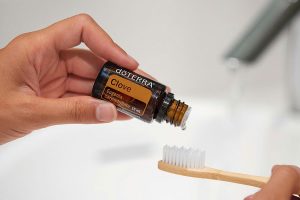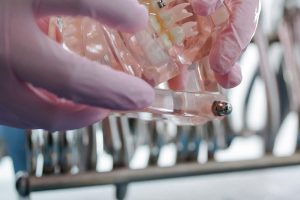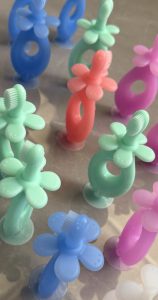Food-grade silicone has become a popular material in the manufacturing of baby products due to its safety, durability, and versatility. This paper explores the properties of food-grade silicone, its advantages over traditional materials, and its diverse applications in baby products such as feeding utensils, pacifiers, teethers, and tableware. Additionally, the paper discusses regulatory standards ensuring its safety and the environmental benefits of using silicone. The findings suggest that food-grade silicone is an ideal material for baby products, offering a combination of hygiene, functionality, and sustainability.
1. Introduction
The safety and well-being of infants are paramount concerns for parents and manufacturers alike. As a result, materials used in baby products must meet stringent safety standards. Food-grade silicone, a non-toxic, hypoallergenic, and durable material, has gained widespread acceptance in the baby care industry. Unlike plastics that may contain harmful chemicals like BPA, phthalates, or PVC, food-grade silicone provides a safer alternative. This paper examines why food-grade silicone is increasingly preferred in baby products and its various applications.
2. Properties of Food-Grade Silicone
Food-grade silicone is a high-purity form of silicone that meets regulatory standards for direct contact with food and oral use. Key properties include:
- Non-Toxicity: Free from BPA, lead, phthalates, and other harmful chemicals.
- Heat Resistance: Withstands extreme temperatures, making it safe for sterilization (boiling, steam cleaning, or dishwasher use).
- Flexibility & Durability: Resistant to tearing and retains shape over time.
- Hypoallergenic: Reduces the risk of skin irritation or allergic reactions.
- Easy to Clean: Non-porous surface prevents bacterial growth.
These properties make it an excellent choice for products that come into direct contact with babies’ mouths and skin.
3. Applications in Baby Products
3.1 Feeding Utensils
Food-grade silicone is widely used in baby bottles, nipples, spoons, and bowls. Its soft texture is gentle on gums, making it ideal for transitioning from breastfeeding to solid foods. Silicone baby bottles, for instance, are lightweight, shatterproof, and do not leach chemicals when heated.
3.2 Pacifiers and Teethers
Silicone pacifiers are softer than latex alternatives and do not degrade over time. Teethers made from food-grade silicone provide a soothing surface for babies during teething while being easy to clean and sterilize.
3.3 Bibs and Placemats
Silicone bibs are waterproof, stain-resistant, and easy to wipe clean. Silicone placemats with suction bases prevent spills and provide a hygienic surface for mealtime.
3.4 Toys and Tableware
Many baby toys, such as chewable books and sensory toys, use food-grade silicone due to its safety and tactile benefits. Silicone plates and cups are also popular for their durability and resistance to breakage.
4. Safety and Regulatory Standards
Food-grade silicone must comply with international safety standards, including:
- FDA (U.S. Food and Drug Administration)
- LFGB (European Food Safety Standards)
- REACH (EU Chemical Regulation)
These certifications ensure that the material does not release harmful substances, even under high temperatures.
5. Environmental Benefits
Unlike single-use plastics, food-grade silicone is reusable and long-lasting. It is also recyclable in specialized facilities, reducing environmental waste. Many brands now promote eco-friendly silicone baby products as a sustainable alternative.
6. Conclusion
Food-grade silicone has revolutionized the baby product industry by offering a safe, durable, and eco-friendly material. Its applications in feeding, teething, and mealtime products demonstrate its versatility and reliability. As consumers increasingly prioritize safety and sustainability, the demand for silicone-based baby products is expected to grow. Manufacturers and parents alike can trust food-grade silicone as a superior choice for infant care.
References
(Include relevant academic articles, FDA guidelines, and industry reports.)
This paper provides a comprehensive overview of food-grade silicone’s role in baby products, highlighting its benefits and applications while emphasizing safety and sustainability. Let me know if you need any modifications or additional details!
 seinee
seinee





HelloPlease log in